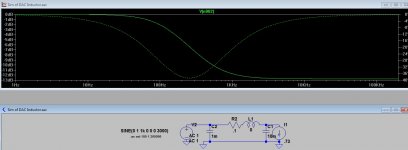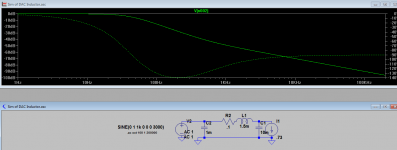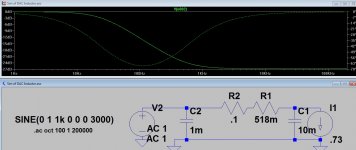Thought I'd chime in here. I've been running Reflektor's in two DAC's for the last month or so and I have to say - they've really elevated the performance of both. One is a Sabre build, with Reflektor's applied to the BIIIse DAC and the clocks on Acko's SO3 Isolator/Reclocker board. The other is a CS DAC with a Reflektor feeding the DAC.
Bottom line: Reflektor's are required components for all future DAC/Digital builds.
Thanks again Salas (and Tea-Bag) - you just keep right on noodling on how to get more out of our circuits. Your efforts are hugely appreciated.
Bottom line: Reflektor's are required components for all future DAC/Digital builds.
Thanks again Salas (and Tea-Bag) - you just keep right on noodling on how to get more out of our circuits. Your efforts are hugely appreciated.
Has even less stuff to make a noise. Not a general wide range reg. Bib is more dynamic on analogue OTOH.
Thank you for that.
Just another question if I may - I see that some are using insulators for the cooling elements while the manual states not to. Any advantages one way or the other?
Just another question if I may - I see that some are using insulators for the cooling elements while the manual states not to. Any advantages one way or the other?
I see that some are using insulators for the cooling elements while the manual states not to. Any advantages one way or the other?
Heat transfer from the transistor to the heatsink will be more efficient without the insulator.
Ray
I am considering to purchase a reclocker which is powered by a cheap 9v. supply. May Reflektor reach this high?
If the power isn't much for the shunt MOSFET's sink, then yes. Means running it not much higher than the load demand and a 12VAC Tx. The Vref needs some boost also http://www.diyaudio.com/forums/powe...-voltage-shunt-regulator-654.html#post3975287 plus a diode maybe
Quick question - when supplying the Reflektor-D with DC power, is it suggested to remove the 10,000uF reservoir cap? Any problems with leaving it in? Any advantages to leaving it in?
Quick question - when supplying the Reflektor-D with DC power, is it suggested to remove the 10,000uF reservoir cap? Any problems with leaving it in? Any advantages to leaving it in?
I'm thinking of reducing the reservoir cap to 1000uF to decrease inrush current. That should be plenty, correct? I'd like to have something there since the rest of the power supply is in another box.
If you leave you can make CLC or CRC
That's a thought. The rest of the supply is in the PS box and is already regulated with an LM317 because it supplies the control circuits of the tube preamp. I'm just beefing that up with a bigger transformer and heat sink and using it to power a Buffalo IIISE DAC board in the preamp box. I guess I could toss a choke in front of the Reflektor in the DAC box to make a CLC from the cap after the LM317 in the PS box, the choke and the 10,000uF cap on the Reflector board.
Probably overkill but I do like chokes...
LTSpice shows that adding a small choke (1.5mH, 518mohm DCR) before the 10mF cap does improve the filtering a lot, especially at higher frequencies. Sim #1 is without choke (L=0), sim #2 is with choke. Output looks stable with no peaking as long as the choke value is kept below ~1.8mH. The choke ought to help with limiting the inrush current as well.
Attachments
Last edited:
Digkey has these little ferrite core chokes for less than $5. 1.5mH, 2A.
1130-152K-RC Bourns Inc. | M8371-ND | DigiKey
Can't hurt to try it out.
1130-152K-RC Bourns Inc. | M8371-ND | DigiKey
Can't hurt to try it out.
Try the same thing with a simple 0.5R resistor instead of the choke - it'll be interesting to see the difference.
Your wish is my command. An improvement with a .518R resistor but nowhere near the performance of the choke.
Attachments
Last edited:
A question about the best way to hook up a Reflektor supply if I may...
I'll be using a Reflektor to power an Acko SO3 digital clock/isolator board, which has three power supply connectors (for separate onboard power supplies).
I could;
Thanks
Ray
I'll be using a Reflektor to power an Acko SO3 digital clock/isolator board, which has three power supply connectors (for separate onboard power supplies).
I could;
- run separate wires (including sensing) between the Reflektor and each of the SO3 power supply connectors.
- run wires (including sensing) to one of the SO3 power supply connectors and then daisy chain just the power supply wires to the other SO3 connectors.
- run separate wires (including sensing) to a point close to the SO3 and then split out power supply wires to the SO3 connectors.
- connect the sensing at the Reflector and run power supply wires to each SO3 connector.
Thanks
Ray
- Home
- Amplifiers
- Power Supplies
- Reflektor-D builds


